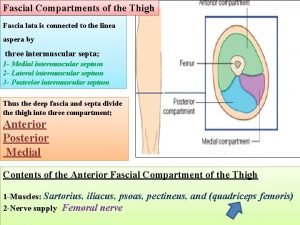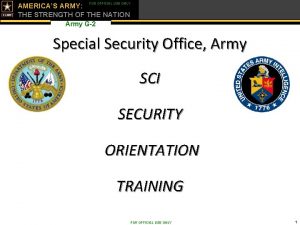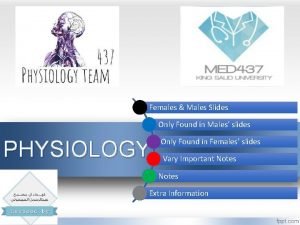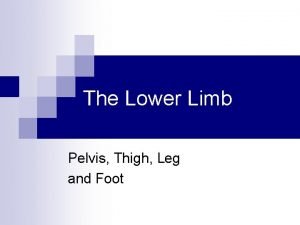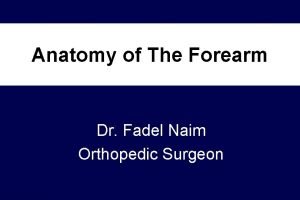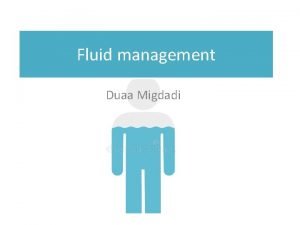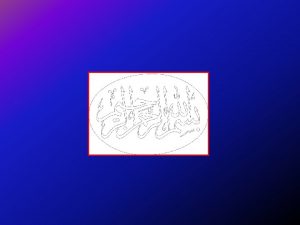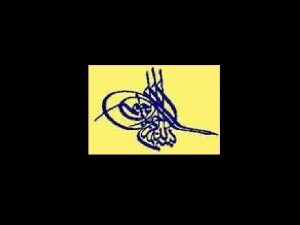Fascial Compartments of the Leg Dr Zeenat Zaidi



































- Slides: 35


Fascial Compartments of the Leg Dr. Zeenat Zaidi

Deep Fasia of the Leg l l l Continuous above with the deep fascia of the thigh (fascia lata) Below the tibial condyles, attached to the periosteum on the anterior and medial borders of the tibia Two intermuscular septae pass from its deep aspect to be attached to the fibula Together with the interosseous membrane, the septae divide the leg into anterior, lateral, posterior compartments Distally, the fascia thickens and forms the flexor, extensor, and fibular retinaculae

Retinacula l l l Around the ankle, the deep fascia thickens to form retinacula that keep the long tendons around the ankle joint in position and act as pulleys. Superior Extensor Retinaculum l Attached to the distal ends of the anterior borders of the fibula and tibia Inferior Extensor Retinaculum l Y-shaped band located in front of the ankle joint. Fibrous bands separate the tendons into compartments, each of which is lined by a synovial sheath.

l Flexor Retinaculum l l l Extends from the medial malleolus downward and backward to be attached to the medial surface of the calcaneum. Binds the tendons of the deep muscles of the back of the leg to the back of the medial malleolus as they pass forward to enter the sole. The tendons lie in compartments, each of which is lined by a synovial sheath.

l l Superior Peroneal Retinaculum l Connects the lateral malleolus to the lateral surface of the calcaneum. It binds the tendons of the peroneus longus and brevis Inferior Peroneal Retinaculum l Binds the tendons of the peroneus longus and brevis muscles to the lateral side of the calcaneum. The tendons each possess a synovial sheath, which is continuous above with the common sheath.

Muscles of the Leg: Movements l The various leg muscles act on multiple joints and produce the following movements: l l l Ankle: Dorsiflexion and Plantar flexion Intertarsal joints: Inversion and Eversion of the foot Toes: Flexion and Extension


Anterior & Lateral Compartments of the Leg

Cutaneous Nerves l l l Upper part of the lateral surface: l Lateral cutaneous nerve of the calf, a branch of the common peroneal nerve Lower part of the anterolateral surface: l Superficial peroneal nerve, a branch of the common peroneal nerve Anteromedial surface of the leg: l Saphenous nerve, a branch of the femoral nerve

Superficial Veins & Lymphatics l l l Numerous small veins curve around the medial aspect of the leg and ultimately drain into the great saphenous vein The lymphatics follow the great saphenous vein, to end in the vertical group of superficial inguinal lymph nodes. A small amount of lymph from the upper lateral part of the front of the leg may pass via vessels that accompany the small saphenous vein and drain into the popliteal nodes

Contents of the Anterior Compartment l l l Muscles: l Tibialis anterior l Extensor digitorum longus l Peroneus tertius l Extensor hallucis longus Blood supply: l Anterior tibial artery Nerve supply: l Deep peroneal nerve

Muscles of the Anterior Compartment l l l These muscles are the primary toe extensors and dorsiflexors. Tibialis anterior plays an important role in holding up the medial longitudinal arch in the foot Supplied by deep peroneal nerve

Origin: Lateral surface of shaft of tibia and interosseous membrane Insertion: Medial cuneiform and base of first metatarsal bone Origin: Anterior surface of shaft of fibula Insertion: Extensor expansion of lateral four toes Muscles Origin: Anterior surface of shaft of fibula Insertion: Base of fifth metatarsal bone Origin: Anterior surface of shaft of fibula Insertion: Base of distal phalanx of great toe

Blood Vessels Anterior Tibial Artery l l Smaller of the terminal branches of the popliteal artery. Arises at the level of the lower border of the popliteus muscle Passes forward into the anterior compartment of the leg through an opening in the upper part of the interosseous membrane. Descends on the anterior surface of the interosseous membrane, accompanied by the deep peroneal nerve.

l l l In the upper part of its course: Lies deep to the muscles In the lower part of its course: Lies superficial in front of the lower end of the tibia. Passes deep to the extensor retinacula Lies between the tendon of the extensor hallucis longus on its medial side and the deep peroneal nerve and the tendons of extensor digitorum longus on its lateral side. It is here that its pulsations can easily be felt in the living subject. In front of the ankle joint, the artery becomes the dorsalis pedis artery

Branches l l Muscular branches to neighboring muscles Anastomotic branches that anastomose with branches of other arteries around the knee and ankle joints Venae commitantes of the anterior tibial artery join those of the posterior tibial artery in the popliteal fossa to form the popliteal vein

Nerve Supply Deep Peroneal Nerve l One of the terminal branches of the common peroneal nerve Arises in the substance of the peroneus longus muscle on the lateral side of the neck of the fibula Enters the anterior compartment by piercing the anterior fascial septum Descends deep to the extensor digitorum longus muscle, first lying lateral, then anterior, and finally lateral to the anterior tibial artery Passes deep to the extensor retinacula l Branches l l l Muscular Articular branch to ankle joint

Contents of the Lateral Compartment l l l Muscles: l Peroneus longus l Peroneus brevis Blood supply: l Branches from the peroneal artery Nerve supply: l Superficial peroneal nerve

Muscles of the Lateral Compartment l l The peroneus longus and brevis muscles are: Planterflexors and evertors of the foot Play an important role in holding up the lateral longitudinal arch in the foot. In addition, the peroneus longus tendon serves as a tie to the transverse arch of the foot.

Origin: Lateral surface of shaft of fibula Insertion: Base of first metatarsal and the medial cuneiform Origin: Later al surface of shaft of fibula Insertion: Base of fifth metatarsal bone

Artery of the Lateral Compartment l Numerous branches from the peroneal artery, which lies in the posterior compartment of the leg, pierce the posterior fascial septum and supply the peroneal muscles.

Nerve Supply Superficial Peroneal Nerve l l l One of the terminal branches of the common peroneal nerve Arises in the substance of the peroneus longus muscle on the lateral side of the neck of the fibula Descends between the peroneus longus and brevis muscles, and in the lower part of the leg it becomes cutaneous

l l l Branches Muscular branches to the peroneus longus and brevis Cutaneous: Medial and lateral branches are distributed to the skin on the: l Lower part of the front of the leg l Dorsum of the foot l Dorsal surfaces of the skin of all the toes, except the adjacent sides of the first and second toes and the lateral side of the little toe

The Dorsum of the Foot

l l l The skin is thin, hairy, and freely mobile on the underlying tendons and bones. The sensory nerve supply is derived from the: . Superficial peroneal nerve supplies the skin on the dorsum of the foot; the medial side of the big toe; and the adjacent sides of the second, third, fourth, and fifth toes. l Deep peroneal nerve supplies the skin of the adjacent sides of the big and second toes

l Saphenous nerve passes onto the dorsum of the foot in front of the medial malleolus. It supplies the skin along the medial side of the foot as far forward as the head of the first metatarsal bone. l Sural nerve enters the foot behind the lateral malleolus and supplies the skin along the lateral margin of the foot and the lateral side of the little toe. The nail beds and the skin covering the dorsal surfaces of the terminal phalanges are supplied by the medial and lateral plantar nerves

Dorsal Venous Arch l l l Lies in the subcutaneous tissue over the heads of the metatarsal bones Drains on the medial side into the great saphenous vein and on the lateral side into the small saphenous vein. The great saphenous vein leaves the dorsum of the foot by ascending into the leg in front of the medial malleolus. The small saphenous vein ascends into the leg behind the lateral malleolus. Tributaries: The greater part of the blood from the whole foot drains into the arch via digital veins and communicating veins from the sole, which pass through the interosseous spaces.

Muscles of the Dorsum of the Foot Long Extensor Tendons l l The tendon passes beneath the extensor retinacula, in company with the peroneus tertius muscle and then divides into four, which fan out over the dorsum of the foot and pass to the lateral four toes. Opposite the metatarsophalangeal joints of the second, third, and fourth toes, each tendon is joined on its lateral side by a tendon of extensor digitorum brevis On the dorsal surface of each toe, the extensor tendon joins the fascial expansion called the extensor expansion. Near the proximal interphalangeal joint, the extensor expansion splits into three parts: a central part, which is inserted into the base of the middle phalanx, and two lateral parts, which converge to be inserted into the base of the distal phalanx The dorsal expansion, as in the fingers, receives the tendons of insertion of the interosseous and lumbrical muscles.

Extensor Digitorum Brevis l Origin: Calcaneum l Insertion: By four tendons into the proximal phalanx of big toe and through long extensor tendons to second, third, and fourth toes l Action: Extends toes

Synovial Sheath of the Tendon of Extensor Digitorum Longus l l The extensor digitorum longus and peroneus tertius tendons are surrounded by a common synovial sheath as they pass beneath the extensor retinacula. The sheath extends proximally for a short distance above the malleoli and distally to the level of the base of the fifth metatarsal bone.

Artery of the Dorsum of the Foot l l l Dorsalis Pedis Artery Begins in front of the ankle joint as a continuation of the anterior tibial artery. Terminates by passing downward into the sole between the two heads of the first dorsal interosseous muscle, where it joins the lateral plantar artery and completes the plantar arch. It is superficial in position and is crossed by the inferior extensor retinaculum and the first tendon of extensor digitorum brevis. On its lateral side lie the terminal part of the deep peroneal nerve and the extensor digitorum longus tendons. On the medial side lies the tendon of extensor hallucis longus. Its pulsations can easily be felt.

l Branches l Lateral tarsal artery, which crosses the dorsum of the foot just below the ankle joint Arcuate artery, which runs laterally under the extensor tendons opposite the bases of the metatarsal bones. It gives off metatarsal branches to the toes. First dorsal metatarsal artery, which supplies both sides of the big toe l l

Nerve Supply of the Dorsum of the Foot Deep Peroneal Nerve l l l Enters the dorsum of the foot by passing deep to the extensor retinacula on the lateral side of the dorsalis pedis artery. Divides into medial and lateral branches. l Medial branch supplies the skin of the adjacent sides of the big and second toes. l Lateral branch supplies the extensor digitorum brevis muscle. Both terminal branches give articular branches to the joints of the foot.

 Fascial compartments of leg
Fascial compartments of leg Fistulectomy
Fistulectomy Vestibule nasal
Vestibule nasal Zeenat al banat perfume
Zeenat al banat perfume Hl theorem examples
Hl theorem examples Parts of the abdomen
Parts of the abdomen 421 rule
421 rule For offical use only
For offical use only Titanic watertight compartments
Titanic watertight compartments Intracellular fluid and extracellular fluid examples
Intracellular fluid and extracellular fluid examples Osmolarity vs osmolality
Osmolarity vs osmolality Definition of bag technique in community health nursing
Definition of bag technique in community health nursing Sacral plexus
Sacral plexus Styloid process of radius
Styloid process of radius Calculate fluid deficit
Calculate fluid deficit Hand compartments
Hand compartments Intracellular compartments and protein sorting
Intracellular compartments and protein sorting Forearm space of parona
Forearm space of parona Spaces of the hand
Spaces of the hand Thẻ vin
Thẻ vin Giọng cùng tên là
Giọng cùng tên là Thể thơ truyền thống
Thể thơ truyền thống Hát lên người ơi alleluia
Hát lên người ơi alleluia Hổ sinh sản vào mùa nào
Hổ sinh sản vào mùa nào Diễn thế sinh thái là
Diễn thế sinh thái là Vẽ hình chiếu vuông góc của vật thể sau
Vẽ hình chiếu vuông góc của vật thể sau 101012 bằng
101012 bằng Cong thức tính động năng
Cong thức tính động năng Tỉ lệ cơ thể trẻ em
Tỉ lệ cơ thể trẻ em Lời thề hippocrates
Lời thề hippocrates đại từ thay thế
đại từ thay thế Vẽ hình chiếu đứng bằng cạnh của vật thể
Vẽ hình chiếu đứng bằng cạnh của vật thể Quá trình desamine hóa có thể tạo ra
Quá trình desamine hóa có thể tạo ra Môn thể thao bắt đầu bằng chữ f
Môn thể thao bắt đầu bằng chữ f Thế nào là mạng điện lắp đặt kiểu nổi
Thế nào là mạng điện lắp đặt kiểu nổi Hình ảnh bộ gõ cơ thể búng tay
Hình ảnh bộ gõ cơ thể búng tay
